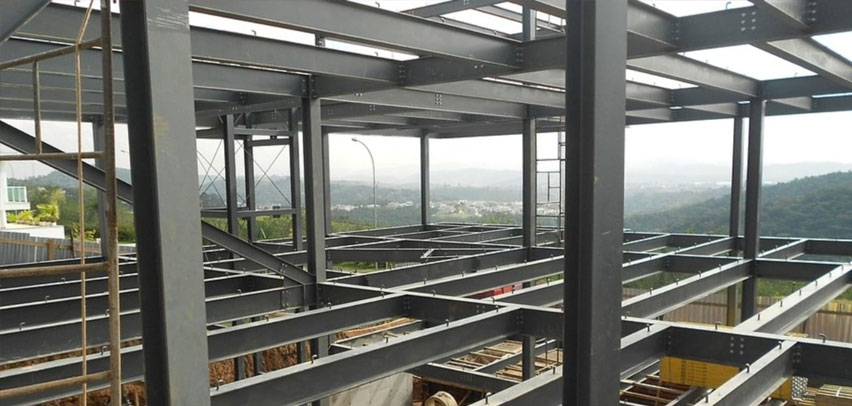Introduction
Steel beams are the backbone of modern construction, providing essential support and strength to a variety of structures. Whether you’re constructing a skyscraper, bridge, or residential home, steel beams play a critical role in ensuring stability and durability. In this comprehensive guide, we’ll explore everything you need to know about steel beams, including their uses, benefits, and different types. By the end, you’ll have a thorough understanding of how to utilize steel beams effectively in your projects.
What Are Steel Beams?
Steel beams are long, horizontal structures made from steel, designed to bear loads and provide structural support. They come in various shapes and sizes, each suited for specific applications. The most common steel beams include I-beams, H-beams, and T-beams, named after their cross-sectional shapes.
Common Uses of Steel Beams
Steel beams are integral to numerous construction projects due to their strength and versatility. Here are some typical uses:
- Building Construction: Steel beams form the framework of buildings, providing the main structural support for floors, roofs, and walls.
- Bridges: They are essential in bridge construction, supporting the weight of the bridge deck and vehicles.
- Industrial Structures: Factories, warehouses, and other industrial buildings rely on steel beams for their structural integrity.
- Residential Homes: Steel beams are increasingly used in residential construction to create open floor plans and support heavy loads.
- Infrastructure: Steel beams are used in various infrastructure projects, including tunnels, overpasses, and railways.
Benefits of Using Steel Beams
Steel beams offer several advantages that make them a preferred choice in construction:
- High Strength: Steel beams provide superior strength and can support heavy loads without bending or breaking.
- Durability: They are resistant to corrosion, pests, and weather, ensuring long-lasting performance.
- Versatility: Steel beams can be customized to fit a wide range of architectural designs and structural requirements.
- Cost-Effective: Despite their high initial cost, steel beams offer long-term savings due to their durability and low maintenance needs.
- Sustainability: Steel is recyclable, making it an environmentally friendly choice for construction projects.
Types of Steel Beams
There are several types of steel beams, each designed for specific applications and load-bearing requirements. The most common types include:
- MS Beams: Our Mild Steel Beams are a popular choice for a variety of construction and engineering applications due to their impressive strength-to-weight ratio and versatility. Ideal for both commercial and residential projects, these beams offer excellent support and stability.
- Stainless Steel Beams: Known for their corrosion resistance and aesthetic appeal, our Stainless Steel Beams are perfect for environments that demand longevity and minimal maintenance. These beams are especially suited for projects where exposure to elements or corrosive substances is a concern.
- Universal Beams: Often referred to as I-beams, our Universal Beams are preferred for their structural efficiency and load-bearing capabilities. These beams are crucial in the construction of bridges, skyscrapers, and other structures that require a framework capable of sustaining heavy loads.
- Universal Columns: Similar in profile to universal beams but with a greater load-bearing capacity, Universal Columns are designed to handle significant vertical loads, making them essential in the construction of buildings and other large structures.
How to Choose the Right Steel Beam for Your Project
Selecting the right steel beam involves considering several factors to ensure optimal performance:
- Load Requirements: Determine the load-bearing capacity needed for your project. This will help you choose the appropriate beam size and type.
- Span Length: Consider the length the beam needs to span without additional support. Longer spans may require larger or reinforced beams.
- Environmental Conditions: Assess the environmental conditions the beams will be exposed to, such as moisture, chemicals, or extreme temperatures.
- Design Specifications: Ensure the beam type fits the architectural design and meets any specific building codes or regulations.
- Budget: Balance your needs with your budget, considering both initial costs and long-term benefits.
Maintenance and Care Tips for Steel Beams
To ensure the longevity and performance of steel beams, follow these maintenance and care tips:
- Regular Inspections: Conduct periodic inspections to check for signs of rust, wear, or structural damage.
- Proper Storage: Store steel beams in a dry, covered area to protect them from moisture and corrosive elements.
- Protective Coatings: Apply protective coatings or paint to steel beams to enhance their resistance to corrosion and weathering.
- Cleaning: Keep steel beams clean, especially in harsh environments, to prevent the buildup of dirt and debris that can cause damage over time.
Conclusion
Steel beams are essential components in construction, offering unparalleled strength, durability, and versatility. By understanding their types, uses, and benefits, you can make informed decisions for your projects. Ferrite Structural Steels Pvt Ltd. is a leading manufacturer and supplier of high-quality steel beams. With extensive experience and a commitment to excellence, we provide a wide range of steel products that meet stringent quality standards. Ferrite Structural Steels Pvt Ltd. is known for its reliable and durable steel beams, making them a trusted partner for construction projects of all sizes. For high-quality steel beams and expert guidance, consider partnering with Ferrite Structural Steels Pvt Ltd., a trusted name in the industry.







